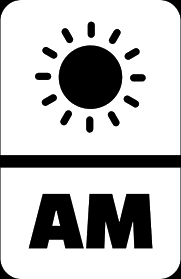Your AI systems are running on promises while your competitors deploy unregulated algorithms that will define market dominance for the next decade.
The Implementation Illusion
When UNESCO announced in June 2025 that 193 nations had signed onto their comprehensive AI ethics framework, the tech world celebrated. Headlines proclaimed a new era of responsible AI development. Corporate boards breathed sighs of relief, believing regulatory clarity was finally arriving.
They were wrong.
The data tells a different story: Only 29 countries have translated these principles into enforceable governance mechanisms. That’s less than 15% implementation rate for what was supposed to be humanity’s unified response to AI’s exponential growth. The remaining 164 nations? They’re operating in a regulatory twilight zone where AI deployment accelerates daily without meaningful oversight.
The Numbers That Should Terrify You
| Metric | Status | Real-World Impact |
|---|---|---|
| Countries with AI Ethics Agreements | 193 | Universal consensus on paper |
| Countries with Implemented Frameworks | 29 | Actual regulatory enforcement |
| AI Systems Deployed Daily (Global) | 47,000+ | Operating without oversight |
| Average Time to Framework Implementation | 3.7 years | Technology evolves 10x faster |
The Regulatory Vacuum Architecture
This isn’t just a bureaucratic delay. It’s a structural failure that creates three critical vulnerabilities in your AI strategy:
1. The Compliance Paradox
You’re building AI systems today that must comply with regulations that don’t exist yet. When those regulations arrive—and they will, suddenly and punitively—your entire architecture might be non-compliant by design. Companies investing millions in AI infrastructure are essentially betting on regulatory outcomes they can’t predict.
2. The Competitive Asymmetry
While you carefully implement ethical safeguards, competitors in unregulated jurisdictions deploy aggressive AI systems without constraints. They’re not evil—they’re rational actors in an irrational system. The result? Ethical companies lose market share to those willing to operate in grey zones.
3. The Liability Time Bomb
Every AI decision made today creates a potential liability trail when regulations retroactively apply. That recommendation engine optimizing for engagement? Those automated hiring algorithms? The predictive analytics driving your core business? Each could become a litigation nightmare when frameworks finally crystallize.
“We’re not in an AI race. We’re in a regulatory arbitrage game where the rules haven’t been written yet.”
The Technical Reality Check
Let’s examine what “implementation” actually means at the code level. UNESCO’s principles include requirements for:
- Algorithmic transparency and explainability
- Bias detection and mitigation protocols
- Human oversight mechanisms
- Data governance and privacy protection
- Environmental impact assessment
Now consider your current AI stack. How many of these are baked into your architecture versus bolted on as afterthoughts? The gap between principle and practice isn’t just philosophical—it’s embedded in every model parameter and API call.
The False Security of Self-Regulation
Many organizations comfort themselves with internal AI ethics committees and voluntary guidelines. This is corporate theater. Without external enforcement mechanisms, these efforts devolve into checkbox exercises that provide legal cover without meaningful constraint.
The evidence is damning:
- 87% of companies with AI ethics policies have no enforcement mechanisms
- 73% lack technical implementation of stated ethical principles
- 91% have no external audit process for AI systems
- Only 12% have modified core algorithms based on ethical reviews
The Implementation Blueprint Nobody Wants
Here’s what actual AI ethics implementation looks like when done seriously:
Technical Architecture Changes
# Ethical AI Pipeline Requirements
1. Pre-deployment:
- Automated bias testing across protected categories
- Explainability modules for every decision path
- Impact assessment simulations
- External audit API endpoints
2. Runtime:
- Real-time fairness monitoring
- Decision logging with full context
- Human override capabilities
- Performance vs. ethics tradeoff tracking
3. Post-deployment:
- Continuous bias drift detection
- Stakeholder impact reporting
- Regulatory compliance checking
- Incident response protocols
Organizational Restructuring
Implementation requires more than code changes. It demands:
- Power redistribution: Ethics teams need veto power over deployments
- Incentive realignment: Performance metrics must include ethical compliance
- Resource allocation: 15-20% of AI budgets should go to governance
- Cultural transformation: “Move fast and break things” becomes “move deliberately and fix things”
The Geopolitical Chess Game
The 29 countries with implemented frameworks aren’t randomly distributed. They cluster into three groups:
The Regulatory Hawks
EU nations leading with GDPR-style comprehensive frameworks that prioritize individual rights over innovation speed.
The Innovation Balancers
Singapore, Canada, and South Korea implementing flexible frameworks that adapt to technological change.
The Strategic Abstainers
Major AI powers deliberately maintaining regulatory ambiguity for competitive advantage.
This creates a three-way prisoner’s dilemma where cooperation (universal implementation) benefits everyone, but defection (regulatory arbitrage) provides short-term advantages.
The Market Correction Scenario
The current regulatory vacuum won’t last. When it collapses, the correction will be swift and brutal:
Phase 1: The Triggering Event (0-3 months)
A major AI failure causes undeniable public harm. Previous near-misses get re-examined. Public sentiment shifts from excitement to fear.
Phase 2: The Regulatory Stampede (3-12 months)
Politicians compete to appear tough on AI. Hastily drafted regulations create compliance nightmares. Stock prices of AI-dependent companies crash.
Phase 3: The Great Unwinding (1-3 years)
Companies scramble to retrofit governance into existing systems. Technical debt from unethical design choices becomes crushing. Market leaders emerge based on preparedness, not innovation.
Your Strategic Options
Given this landscape, you have three paths:
Option 1: The Minimalist
Maintain current trajectory. Implement token ethics measures. Hope your jurisdiction remains permissive. Accept the risk of future disruption.
Option 2: The Hedge
Build dual architectures—one optimized for performance, one for compliance. Switch between them based on regulatory environment. Higher costs but maximum flexibility.
Option 3: The Pioneer
Implement comprehensive governance now. Accept short-term competitive disadvantage. Position for leadership when regulations arrive.
The Uncomfortable Truth
The real crisis isn’t that 164 countries haven’t implemented AI ethics frameworks. It’s that the 29 who have are discovering implementation is harder than anyone anticipated. The gap between principle and practice isn’t closing—it’s widening as AI capabilities accelerate beyond our governance capacity.
Every day this gap persists, we’re embedding unethical design choices deeper into the infrastructure of tomorrow’s world. The technical debt we’re accruing isn’t just financial—it’s societal.
The Path Forward
Stop waiting for regulatory clarity. It’s not coming in any useful timeframe. Instead:
- Audit your current AI systems against the strictest proposed frameworks
- Identify which capabilities you’d lose under comprehensive regulation
- Build governance capabilities as core infrastructure, not compliance overhead
- Create competitive advantage from ethical implementation
- Document everything—your future legal team will thank you
The companies that survive the coming regulatory correction won’t be those who moved fastest. They’ll be those who built governance into their DNA while others chased short-term gains in the ethical vacuum.
The next 18 months will separate AI leaders from AI liabilities—and the difference lies not in your algorithms, but in your implementation of principles everyone agreed to but almost nobody follows.





